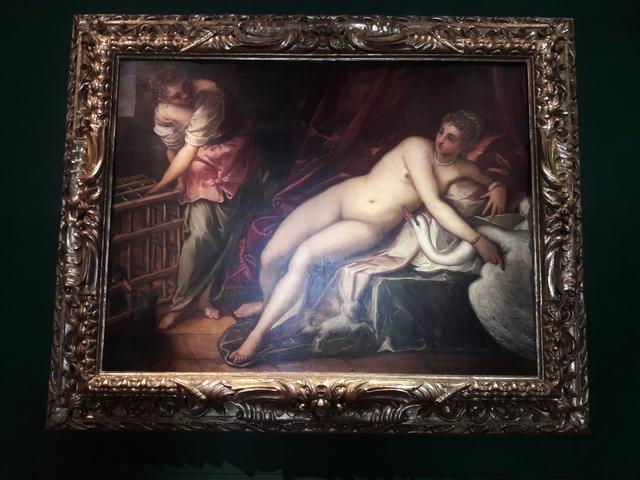Leda and the swan

Leda and the Swan is an oil on canvas painting by Jacopo Tintoretto, dating from 1550-1560
The late 18th-century work was in the collections of the Duke of Orleans in Paris, then moved to London, to the Duke of Bridgwater and, in 1857, to Paul Norton. It was finally donated to the museum by Arturo De Noè Walker in 1895.
Doubts about the autograph were dissolved by the 1988 restoration (retouched in 1994), which rediscovered its notable pictorial qualities. Of the work, the Uffizi preserves another version in the warehouses, from the collections of Alessandro Contini-Bonacossi, which was cut at an unspecified age when the servant was removed, of which a strip of the dress remains. This version, of notable pictorial quality, is also considered an autograph, and was probably the prototype, now mutilated, of the work in the gallery.
Quotations have always been a discordant question for critics, even if today the predominant focus is on mythological works such as Mars and Venus Surprised by Vulcano dell'Alte Pinakothek or biblical works such as those in the Prado.
The scene takes place in an interior where Leda, naked and half lying, brushes against the swan coming from the right, however, she looks at the maid, who is standing on the left, near a cage containing a duck. Other animals accompany the scene, such as the little dog that rushes towards the young owner, the parrot in the cage in the background or the cat that looks towards the viewer. The beautiful protagonist wears only pearls, in her necklace and in her refined hair.
The composition is played on the diagonal line of Leda's body, also very sincere due to the contrast of the red curtain behind her, which closes the four-poster bed, of which only one corner is visible. This strong direction from the bottom left to the top right contrasts with the server's opposite line of force, generating a refined and extremely dynamic "V" pattern.
The pictorial design is particularly loose, illuminated by sudden flashes cleverly juxtaposed to darker, more opaque parts, and without the use of clear contour lines: the figures seem to blend smoothly into the background, sharing some luminous reflections.
© Tourblink